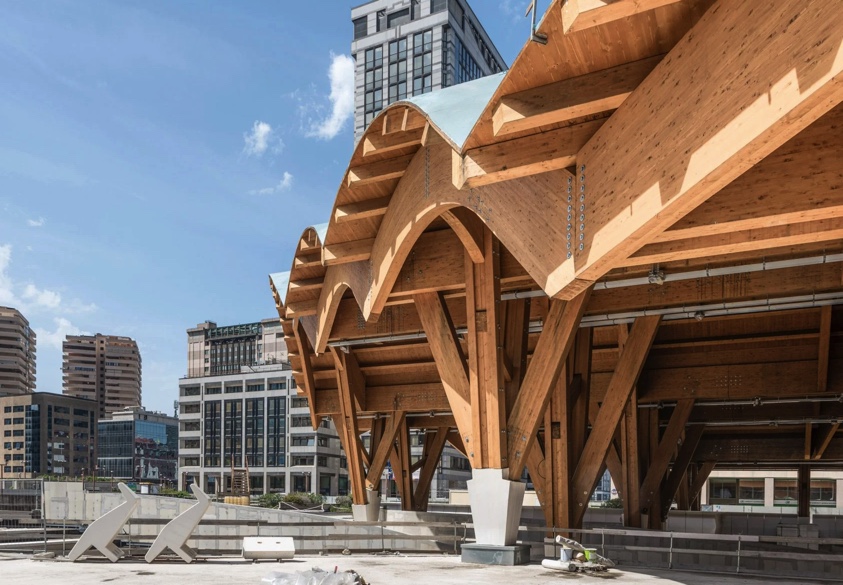An impressive mass-timber metro station under construction in Naples.

Barcelona-based studio EMBT has revealed images of a mass-timber metro station, which is under construction in the Centro Direzionale area of Naples.
The Naples Underground Central Station is being built in a neighbourhood designed by Japanese architect Kenzo Tange as part of a major upgrade to the city’s infrastructure.
The studio, which is led by Benedetta Tagliabue, chose to build the station from wood to create an organic contrast to 1970s district.
“Kenzo Tange designed Centro Direzionale and he built a very Kenzo Tange-type of city with reflective skyscrapers and a piazza, very 1970s, very clean,” Tagliabue told Dezeen. “It didn’t work because it’s so different from the rest of Naples.”
Instead, Tagliabue’s design was informed by older parts of Naples.
“It’s a place where there are a lot of offices and a lot of business space but at five o’clock at night, it’s deserted and very dangerous,” she said.
“So the idea of making a new station there and connecting with the new subway line was also to try to introduce a piece of nature and a piece of the original part of Naples into this artificial piece of the city.”
The swooping new station is being built on top of existing underground lines, replacing a previous building that was little more than cover for the staircase down to the metro platforms.
“We are working on an existing series of platforms and if you put more weight on top, you never know how much you can put,” Tagliabue explained.
“Wood is a very light material, and it combines very well with the pre-existing structures.”
“We used the pre-existing concrete structures, the pre-existing columns, and we inserted new wooden columns in that,” she added.
“We matched the steel part of the concrete to make the base of the new columns, and then the rest of the column is totally made in wood.”
The 10,000 square-metre station’s signature shape is formed from glued laminated timber. The width of the rail tracks below is reflected in the width of the undulating vaults.
“We love vaults,” Tagliabue said. “It’s a great shape that works with most materials – vaults were first made with stone and then with ceramics, and I think it’s also efficient with wood.”
“Especially laminated, because you can give any shape to the beam that you want,” she added.